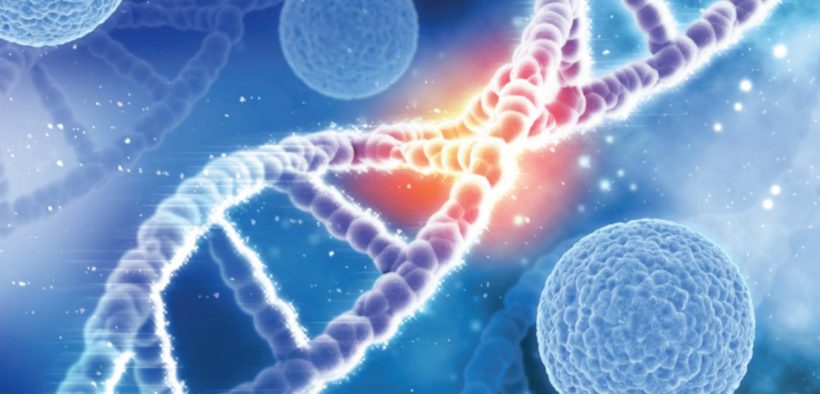From the T-Cells to Nobel Laurels

The revolutionary work in developing immunotherapy for cancer treatment brings the Nobel home for Dr James P Allison and Dr Tasuku
By Shalaka Kulka
Out-of-control, chaotic cell growth is the hallmark of cancer. To rein in the disease and cure patients, chemotherapy is the most common methodology used across continents, followed by surgical oncology and radiation therapy. But the one mode of therapy that has proven that there is light at the end of the tunnel is immunotherapy, which uses the body’s own immune system to fight the disease. Also called biologic therapy, immunotherapy is a cancer treatment that enhances the body’s natural immune system to combat cancer.
Immunotherapy makes use of either natural materials made by the body or created in the laboratory. Basically, the immune cells around the tumor are targeted and made powerful enough to kill the tumor. Immunotherapy has sparked a revolution in bringing out many other ways to harness the immune system to fight against cancer and other illnesses. This year, Dr. James P Allison and Dr. Tasuku Honjo shared a Nobel Prize in physiology and medicine for their pathbreaking work in the field of cancer immunotherapy.
While Dr Allison was discovering new things about CTLA-4’s functioning, across the Pacific, Dr Honjo was working on a similar brake on the immune system, known as PD-1.
The two researchers were announced as the winners on October 1 for a breakthrough that has led to an entirely new class of drugs and brought lasting remissions to many patients who had otherwise run out of options. They will share the 9-million Swedish kronor (£775,000) prize, which will be awarded to them at the Karolinska Institute in Stockholm, Sweden. It is the first time the development of cancer therapy has been recognized with a Nobel and coincidentally it will be awarded on the 125th anniversary of the publication of the first-ever paper written on using immunotherapy to battle cancer. Dr. Allison heard the news from family and friends even before the Nobel Committee could reach him.“I am in a state of shock about having achieved every scientist’s dream,” said Dr. Allison, on hearing the news. “I’d like to give a shout out to all the cancer patients out there to let them know we’re making progress here!”
Dr. Allison chairs the department of immunology at MD Anderson Cancer Center at the University of Texas, USA, while Dr. Tasuku Honjo is a professor at the Graduate School of Medicine, at Kyoto University, Japan. “When I’m thanked by patients who recover, I truly feel the significance of our research and I’d like to continue researching cancer for a while so that this immunotherapy will help save more cancer patients than ever before,” said Dr. Honjo, during a press conference at the Japanese university. The researchers have independently worked on different molecular pathways that normally inhibit the immune system. The Nobel Committee concluded that they both deserve recognition for this innovation.
Their work majorly revolves around the identification of molecules that normally act as a brake on the immune system. The credit of creating an exclusively novel form of cancer treatment—the immune checkpoint therapy—goes to their groundwork. Within the first few years of its approval itself, the therapy has saved thousands of lives.

The PathBreaking Journey
The concept of immunotherapy is about leveraging the natural substances made by the body to fight cancer and other ailments. It aids one’s immune system for treating cancer cells. One’s immune system includes the white blood cells, organs, and tissues of the lymph system. The birth of immunotherapy can be traced back to the end of the 19th century, where medical practitioners tried to fall back upon the human immune system to cure different diseases. But treating cancer using this technique often resulted in a catch 22 situation.
In the year 1990, while studying a protein called CTLA-4, Dr. Allison realized that the activity of the immune system reflects a balance between mechanisms that activate and inhibit it. The protein CTLA-4 is associated with the T cells that organize and execute much of the immune system’s attack on cancer cells. “I’m a basic scientist,” says Dr. Allison. “I didn’t get into these studies to cure cancer, I wanted to understand how T cells work.” However, he does remember the trauma of his mother’s demise due to lymphoma when he was 10 years old. Having witnessed the ravages of radiotherapy and chemotherapy, he always had an eye on whether his efforts might pilot a new therapy. “It was always at the back of my mind,” he explains.
T-cells are a type of white blood cells, referred to as the soldiers of the immune system. They are positioned to fight infections and cancer, but malignant cells can elude them.
The T-cells carry molecules termed as checkpoints, which the human body uses to shut down the cells when they need to be brought to an end. Cancer cells can lock onto those checkpoints, crippling the T-cells and preventing them from fighting. Along with Dr. Allison, many other researchers had also observed CTLA-4’s behavior of suppressing immune responses and were hoping to activate more of it in order to treat autoimmune diseases. On the other hand, the Nobel laureate had a premonition that turning off CTLA-4 might unleash the immune system’s might against cancers, too.
After four years, at the University of California, Berkeley, Dr. Allison demonstrated that by deactivating the molecule with an antibody, he could treat mice diseased with cancer.
“WHEN I’M THANKED BY PATIENTS WHO RECOVER, I TRULY FEEL THE SIGNIFICANCE OF OUR RESEARCH AND I’D LIKE TO CONTINUE RESEARCHING CANCER FOR A WHILE SO THAT THIS IMMUNOTHERAPY WILL HELP SAVE MORE CANCER PATIENTS THAN EVER BEFORE.”
Dr Tasuku Honjo, Professor, Kyoto University, Japan
Gradually, he developed this approach as immune. checkpoint therapy and clinically established that it was suitable for humans. In 2010, his work proved effective against the usually stubborn form of skin cancer called melanoma. The US Food and Drug Administration approved it as a therapy against metastatic melanoma in 2011.
While Dr. Allison was discovering new things about CTLA- 4’s functioning, across the Pacific, Dr. Honjo was working on a similar brake on the immune system, known as PD-1 (for programmed cell death protein). He found that the reins in the T-cell respond in a different way.
Through animal experiments and later in clinical trials, Dr. Honjo portrayed that several types of cancers could be treated by blocking the protein PD-1 with antibodies. In a predominantly remarkable demonstration in 2012, the treatment caused long-term remission with few side effects in patients with metastatic cancer, which was considered untreatable. The US FDA approved immune therapies based on PD-1 for specific cancers in 2014 and 2015.
It was a critical leap when researchers characterized two very important and potent pathways, called immune checkpoints, which had the potential to shut down the immune response. These pathways inhibit T cells that are charged with destroying virus-infected and tumor cells. They prevented them from “seeing” and attacking the tumor. These discoveries made it possible to build drugs that would keep the checkpoints from working, such that T-cells would be free to battle the cancerous ones. This process is often referred to as taking the brakes off the immune system.
Today, immune checkpoint therapies are based on PD-1 and CTLA-4 and are often used together. They are in development stages for several cancer treatments. The scientists’ groundbreaking work on the immune system has resulted in the emergence of a new class of cancer drugs.
The concept of immunotherapy is about leveraging upon the natural substances made by the body to fight cancer and other ailments. It aids one’s immune system for treating cancer cells.

These new drugs, known as checkpoint inhibitors, are already dramatically changing outcomes for the diseased. They do come with considerable consequences but have proved to produce remarkable results in being a remedy for lung cancer, renal cancer, lymphoma, and melanoma. The first drugs approved were Ipilimumab (brand name Yervoy), Nivolumab (Opdivo) and Pembrolizumab (Keytruda).
Ipilimumab was based on Dr. Allison’s work on the checkpoint CTLA-4. The later drugs work on PD-1.
Former US President Jimmy Carter received a checkpoint inhibitor, Keytruda, in 2015, when melanoma spread to his brain and liver. His last scan showed no presence of cancer. A study published in August found that combining Yervoy and Opdivo significantly prolonged life for patients in a desperate situation when melanoma had spread to the brain.
Dr. Allison recently met, Sharon Belvin, a young woman who was suffering from stage 4 melanoma in 2004. After only four doses of the drug Dr. Allison had developed, she no longer had cancer. Dr. Allison weeps while recounting the story. Belvin who was only 22 years old when diagnosed, is cancer-free today, runs half marathons and has two children. She recently attended Dr. Allison’s birthday party. “Science is a long and frustrating road. There’s no instant gratification. You’ve got to be comfortable with a lot of failures to get there,” says Dr. Allison.
Dr. Honjo is an avid golfer and one day, he was approached at a golf club by a fellow player. To his surprise, the gentleman thanked him for his discovery which treated his lung cancer. “He told me, ’Thanks to you I can play golf again.’ That was a blissful moment,” says Dr. Honjo.
“When I’m thanked by patients who recover, I truly feel the significance of our research. A comment like that makes me happier than any prize.” Immunotherapy may work through multiple channels like stopping or slowing the growth of cancer cells, stopping cancer from spreading to other parts of the body and helping the immune system work better at destroying cancer cells. And there are several types of immunotherapy practices, such as monoclonal antibodies, non-specific immunotherapies oncolytic virus therapy, T-cell therapy, and cancer vaccines.
The Nobel Foundation stated in its description the merits of Dr. Allison’s and Dr. Honjo’s work. The notion of mobilizing the immune system to tackle cancer was first proposed more than a century ago, but it was only after the discoveries made by these Nobel Laureates that this likelihood could be turned into proper clinical treatment.
The notion of mobilising the immune system to tackle cancer was first proposed more than a century ago, but it was only after the discoveries made by these Nobel Laureates that this likelihood could be turned into a proper clinical treatment.
The Indian Perspective
Says Dr. Gopal Gurjar, an onco-surgeon at the National Cancer Institute, Jhajjar, Haryana, about the game-changing treatment and the Nobel awardees: “Dr. Honjo and Dr. Allison’s work in immunotherapy is phenomenal, where it modulates one’s own body against cancer in order to tackle the overgrowth and infections. The Nobel laureates have researched, strived hard rather, on targeting the mutated cells. It wasn’t an easy dream. It was a dedicated effort in finding a cure to one of the most dangerous diseases on this planet.”
Since every patient has a different body type and a different type of tumor, the generalization of treatment needs to be done. India has very few labs dedicated to research at this juncture.”Immunotherapy will be extremely costly and needs to be customized as per an individual’s body requirement,” explains Dr. Gurjar. “It is not just restricted to treating cancer but other degenerative chronic situations as well.”
He explains that the molecules one receives in India are either original ones from different research labs or generic molecules which are produced by reverse engineering, which is rampant in the country. “The orientation of these molecules can be different from the original ones,” he says. “The studies done with these molecules can’t be extrapolated over the original ones and vice versa. We need to study authentic molecules. We need strong R&D teams in India to learn and adapt the existing work and carry it forward as well.”
Says clinical hematologist and medical oncologist Dr. Shriram Kane, “The drugs based on immunotherapy research are scarce in number. And I believe that these will develop rapidly. As of today, they are really expensive but the growth and efficiency of this technique look promising. Once this treatment is popularised across different types of cancers, I believe there will be a revolution in terms of saving lives. There was a time when a few immunotherapy drugs were priced at INR 2 lakh but today they cost INR 25,000.” Dr. Kane believes that the fourth dimension called immunotherapy will be the future of cancer treatment and will stand taller than the existing methods, overcoming their loopholes.
















